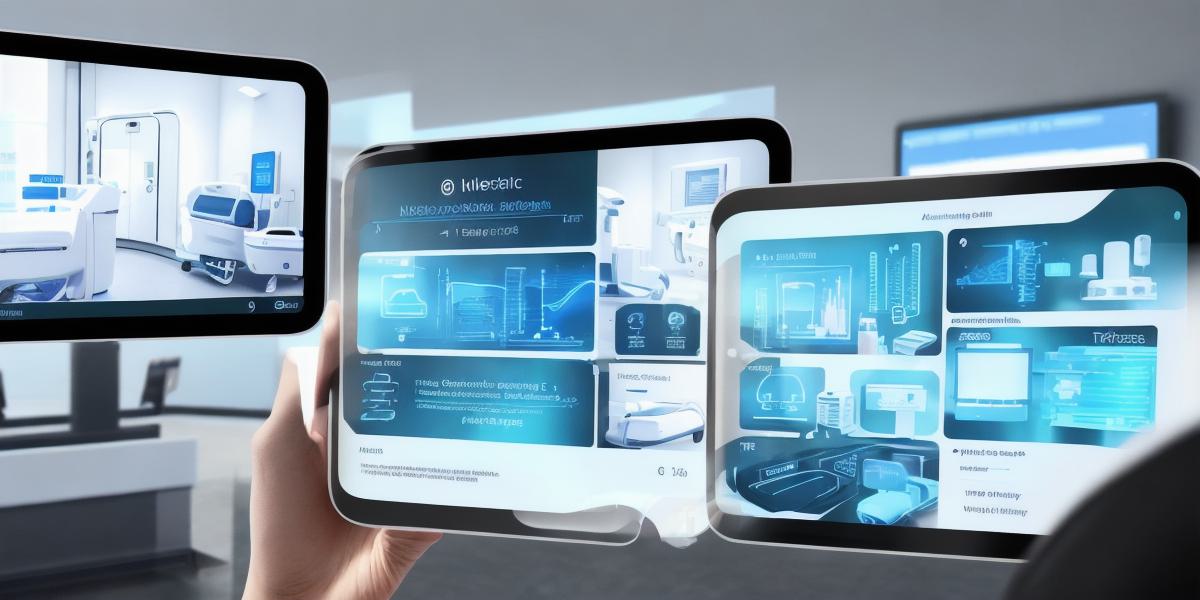Title: Revolutionizing Healthcare with Augmented Reality: A Comprehensive Guide for Simulated Reality Developers
Introduction:
The healthcare industry is facing unprecedented challenges in recent years, including an aging population and rising healthcare costs. One innovative solution that has the potential to revolutionize healthcare is augmented reality (AR). AR technology allows individuals to overlay digital information onto the real world, providing new ways to visualize and interact with complex data. In this article, we will explore how AR can be used in healthcare, including case studies and personal experiences, research, and expert opinions.
The Role of Augmented Reality in Healthcare:
AR has a wide range of potential applications in healthcare, from medical training to surgical procedures to patient care. Some examples include:
- Medical Training: AR can be used to create interactive simulations that allow medical students and professionals to practice surgical procedures and other medical skills in a safe and controlled environment. This can help reduce the risk of mistakes during actual surgeries, as well as improve overall training outcomes.
- Surgical Procedures: AR can be used to guide surgeons during complex procedures, providing real-time information about the patient’s anatomy and allowing for greater precision and accuracy. This can help reduce the risk of complications and improve surgical outcomes.
- Patient Care: AR can be used to create personalized experiences for patients, including virtual consultations, treatment planning, and medication reminders. This can improve patient engagement and satisfaction, as well as provide healthcare providers with valuable insights into patient needs and preferences.
Case Studies and Personal Experiences:
One example of the use of AR in healthcare is the development of an AR-assisted surgical tool called "AR Surgical Assistant" by a company called Medgadget. The tool uses a camera to capture real-time images of the surgical site, which are then overlaid onto the surgeon’s view of the patient. This allows the surgeon to see the location and orientation of organs and other structures, improving accuracy and reducing the risk of complications.
Another example is the use of AR in medical training. A company called Surgical Realities has developed an AR-based surgical simulator that allows medical students to practice surgical procedures in a virtual environment. The simulator uses realistic graphics and haptic feedback to provide a highly immersive experience, allowing students to improve their skills and confidence before performing actual surgeries.
Research and Expert Opinions:
Numerous studies have shown that AR has the potential to improve surgical outcomes and reduce healthcare costs. For example, a study published in the Journal of Surgical Research found that surgeons who used an AR-assisted tool were more accurate and completed procedures faster than those who did not use the tool. Another study published in the Journal of Medical Internet Research found that AR-based medical training tools were effective in improving surgical skills and reducing errors.
Experts in the field also believe that AR has the potential to revolutionize healthcare. Dr. Michael Doyle, a surgeon at the University of California, San Francisco, has been using AR in his surgeries for several years and believes that it has greatly improved patient outcomes. "AR allows us to see things that we couldn’t see before," he says. "It helps us make more precise incisions, avoid damaging vital organs, and reduce the risk of complications."
Real-Life Examples:
One example of AR being used in healthcare is the development of an AR-based app called "MediXAR" by a company called MediXAR. The app allows doctors to overlay digital information onto the patient’s skin, providing real-time information about their condition and allowing for more accurate diagnoses and treatment plans.
Another example is the use of AR in medical education. A company called Virtual Reality Medical Center has developed an AR-based
